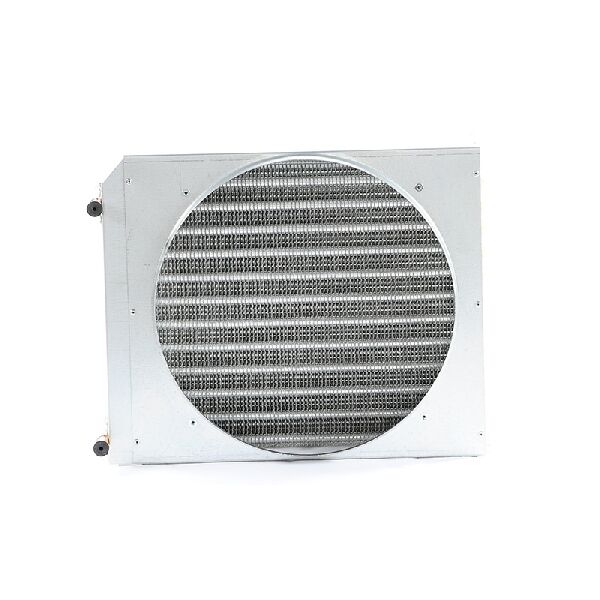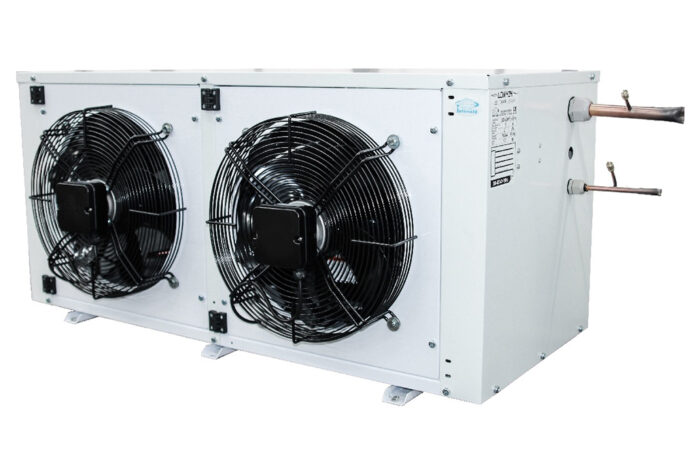Air-to-air heat exchangers are a practical and effective way to heat or cool your home efficiently. The Heat Exchanger Air To Air help ensure you’re wasting energy by relying on an outdated heating system. An air-to-air heat exchanger can be installed in either a new home or an existing one. However, it is instrumental in homes with older systems that may be inefficient at removing and replacing stale indoor air with fresh outdoor air. Air-to-air heat exchangers can also be part of a ventilation system that allows you to swap out unwanted humidity for dryer air from the outside – this reduces the risk of mould growth within your home’s!
Air-to-air heat exchangers are a practical and effective way to heat or cool your home efficiently.
Air-to-air heat exchangers are a practical and effective way to heat or cool your home efficiently. They use the principle of convection, which uses warm air rising from one side of the exchanger and cold air falling on the other. This makes them more efficient than other exchanges, like water-to-air or geothermal systems.
Cost is another factor that makes air-to-air units a better choice, as they are less expensive to install than water heaters and geothermal units. Air-to-air units also don’t require plumbing work since all components can be placed on top of your current flooring without disturbing any walls or ceilings.
Low energy costs
A heat exchanger is a significant investment, and one of the most important benefits of running a heat exchanger from air to air is that it will help save you money and energy. Heat exchangers are designed to help with humidity removal as well as cooling. They do this by using an evaporator coil with refrigerant running through it that absorbs moisture from the incoming air stream before passing into your home’s system or dour rooms. Keeping indoor levels low reduce heating costs during winter by reducing humidity build-up in walls and floors. Humidity can condense inside walls, which increases mould growth, causes wood rot, increases pest populations (such as termites), reduces comfort levels in hot weather climates and produces odour problems in older homes where ventilation is poor.”
 Improve indoor air quality with Whole House Air Exchanger
Improve indoor air quality with Whole House Air Exchanger
Air-to-air heat exchangers are a great way to improve indoor air quality, as the Whole House Air Exchanger use fresh outdoor air to push out old stale or unhealthy air. The fresh air that is passed through the home will help keep you healthy while improving energy efficiency.
Looking for ways to improve your home’s or environment, looking into an air-to-air heat exchanger may be right up your alley!
Swap out stale air for fresh air
Your home is full of stale air. This can be a problem for many reasons, including but not limited to the following:
- The air inside your home is contaminated and full of allergens. If you have pets or children, you know how quickly they can bring in dirt and dust from outside. This air must be constantly exchanged with fresh air to keep indoor air clean and healthy.
- Outside, it doesn’t make sense to open windows without proper ventilation. Using an HRV unit furnace or heat pump, you can exchange warm inside air with calm outside even when temperatures are low!
An Air-to-air heat exchanger is a significant investment.
When you’re in at the price of a heat exchanger, it can be hard to see beyond the sticker shock. But when you consider all of the benefits mentioned above and consider that energy-efficient houses are becoming increasingly common (which means people will be more likely to buy your property), investing in something that will last for years makes sense.
One vital thing to remember is that it takes time for some types of HVAC systems (those with regenerative blowers) to recover their investment costs through lower energy bills. If you have an older home and don’tdon’t your heating bill to drop by more than 50 per cent right away, this may not be right for you. However, installing a heat exchanger might save money while improving your comfort level year-round if you’re ng a new house or getting ready for an upgrade.
What are the benefits of running a heat exchanger from air to air?
Air-to-air heat exchangers are a cost-effective way to heat or cool your home. Then they’re a practical and effective way to heat or cool your home efficiently. However, air-to-air heat exchangers are a significant investment, so you must consider the benefits of running an air-to-air unit before purchasing one for your home.
Here are some of the best benefits of using an air-to-air exchanger:
One of the most significant benefits of running a heat exchanger air to air is that it will help save you money and energy.
One of the most significant benefits of running a heat exchanger air to air is that it will help save you money and energy. One of the biggest reasons people have switched to using a heat exchanger unit is that they can save up to 30% on their heating and cooling bills. The cost of running an air-to-air heat exchanger is much cheaper than a furnace, which means it will be easier for you to keep your home heated throughout the winter months.
Another benefit of installing this type of system in your house is that you won’twon’t have any problems with mould or mildew growing inside your walls like with other techniques such as radiant hydronic floors or forced hot water systems (which use radiators).
The Small HRV Units provide an energy-efficient way to keep your house comfortable during the summer and winter.
For the past few years, had an increased interest in residential heat exchangers for air-to-air. The Small HRV Units provide an energy-efficient way to keep your house comfortable during the summer and winter. Heat exchangers are a significant investment, but they’re practical and effective ways to heat or cool your home efficiently.
The heat exchanger is an integral part of any HVAC system: it allows you to collect hot air from inside your home and transfer it outside through a ducted system that leads outside your building. This helps reduce energy costs because it doesn’t fire as much outside air ventilation during cold months, which means less energy is spent on heating or cooling systems.
Deciding between exhaust only or full fresh air ventilation for your home can be difficult.
Deciding between exhaust only or full fresh air ventilation for your home can be difficult. Exhaust-only ventilation is more energy efficient, but it’s good for indoor air quality, allergies and asthma. Fresh air ventilation will improve indoor air quality but may increase humidity levels in your home or even increase the risk of mould growth.
Suppose you have many moisture problems in your home, such as high humidity levels or excess condensation on windows and walls. In that case, an HRV unit with exhaust-only ventilation could be just what you need to solve these problems by removing excess water vapour from inside the house so that it doesn’t trap when warm moist air comes back into the place after being outside in winter months.
With a heat recuperator, your home will receive fresh, heated or cooled air from outside.
A heat recuperator, like the HRV unit, is a device that captures heat and releases it back into the home. However, instead of using a fan to circulate return air through the system, it uses an internal heat exchanger where outside air passes through refrigerant tubes. The refrigerant absorbs heat from outside and transfers it to recirculated indoor air, which is heated or cooled by an outdoor coil before being distributed into your home’s work.
The benefits of this type of system are many:
- You can use less energy while keeping your house at more comfortable temperatures year-round—without having to turn on your furnace or AC as often (saving you money).
- Your HVAC system will run more efficiently overall because its efficiency can be controlled by adjusting the amount of solar radiation entering a building—a function called passive ventilation—which means less energy is needed for heating or cooling your house throughout winter months when sunlight isn’t high on its own.*
- Heat recovery ventilators also help reduce CO2 emissions because they don’t require electricity like traditional furnaces.*
- Last but not least, you’ll have fresher-smelling rooms without worrying about stale odours being trapped inside!
Consider using a Heat Recuperator Air To Air unit in your home!
Consider using a Heat Exchanger Air To Air unit in your home!
Heat exchangers are a great way to save energy, keep your home comfortable, and reduce utility bills. A heat exchanger air to air is an indoor device that uses fans to draw fresh outdoor atmosphere through an evaporator coil. This coil cools the incoming air, removing moisture and cooling down the room temperature you need to keep comfortable. Then this Heat Recuperator cooled-down indoor air goes through an inner rotating fan blade that separates it from any moisture present so that it can be quickly warmed back up again before being released back into your home through slits on both sides of the unit. That’That’syou get both hot and cold from just one device!
Conclusion
Air-to-air heat exchangers are a practical and effective way to heat or cool your home efficiently. They are easy to install and can be used in many applications, such as residential homes, offices, hotels and restaurants. If you’re looking for an energy-efficient way to save money on heating costs or cooling bills, consider using an Air-to-Air heat exchanger unit in your home!
Related Websites
Articles on Blogshunt
Articles on Blogseu
Articles on Blogspeoples
Articles on Thebigblogtheory
Articles on Allcityforums

